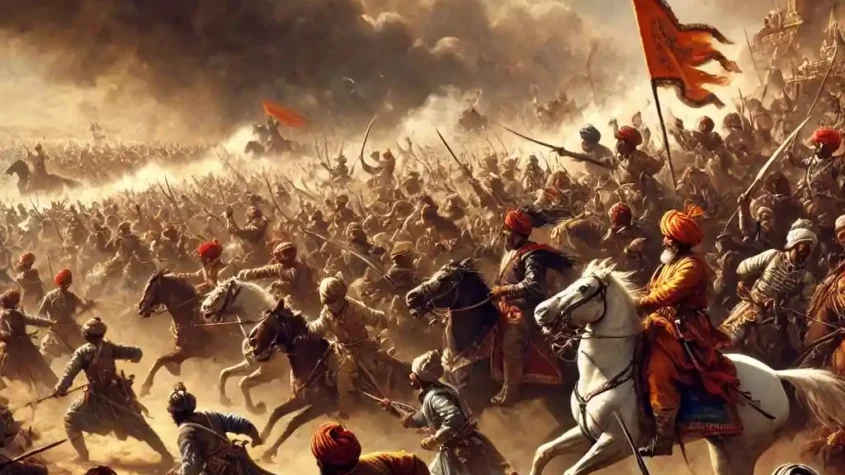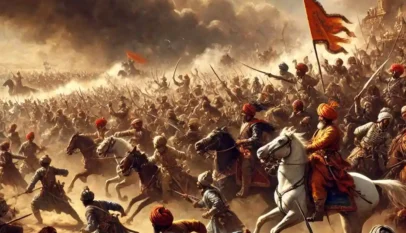
The Egerp Panipat holds significant historical importance in India, particularly in the context of the battles that took place in the region. This blog post explores how the battles fought at Panipat shaped the course of Indian history and influenced the dynamics of power in the subcontinent. Understanding the intricacies of these events can provide valuable insights into the socio-political landscape of the time.
Panipat is not just a geographical location; it became synonymous with conflict and conquest. The three major battles fought here marked pivotal turning points in the establishment and decline of empires in India. Each battle left a lasting impact on the cultural and military heritage of the nation, making it a critical area of study for historians and enthusiasts alike.
As this article unfolds, readers will discover the stories behind these battles, their key figures, and the lasting legacies they created. Engaging with the rich history of Egerp Panipat offers a deeper appreciation for the complexities of India’s past.
Historical Significance of Panipat
Panipat holds a crucial place in Indian history due to three significant battles that shaped the subcontinent’s political landscape. Each battle marked a turning point, influencing dynasties and altering the course of history.
First Battle of Panipat (1526)
The First Battle of Panipat occurred on April 20, 1526, between the forces of Ibrahim Lodi and Babur. This confrontation marked the beginning of the Mughal Empire in India. Babur, equipped with superior artillery, effectively utilized his military strategy against Lodi’s elephants and infantry.
The result led to the defeat of Ibrahim Lodi, who died in battle, while Babur ascended to power. This victory established Mughal dominance in Northern India, setting the stage for a new era of governance, culture, and architecture. The battle is seen as a significant shift from the Delhi Sultanate to Mughal rule.
Second Battle of Panipat (1556)
The Second Battle of Panipat took place on January 5, 1556. It was fought between the forces of the Mughal Emperor Akbar, led by Bairam Khan, and Hemu, a ruler who proclaimed himself king. Hemu’s forces were initially successful, but a crucial arrow struck Hemu in the eye, rendering him incapacitated.
The ensuing chaos among Hemu’s troops allowed the Mughals to seize victory. This battle reaffirmed Mughal power and led to Akbar’s consolidation of the empire. It also marked the resurgence of Mughal authority after a period of instability.
Third Battle of Panipat (1761)
The Third Battle of Panipat occurred on January 14, 1761, between the Maratha Empire and the Durrani Empire led by Ahmad Shah Durrani. This battle was one of the largest fought in the 18th century and had extensive implications for Indian politics.
The Marathas faced significant casualties and were ultimately defeated. This battle marked the decline of the Maratha Empire and a shift in power dynamics, paving the way for British colonial influence in India. The aftermath of this battle left a lasting impact on regional alliances and conflicts.
Modern Developments in Panipat
Panipat has witnessed significant modern developments that have transformed its economic landscape and improved urban life. Key areas include industrial growth, advancements in tourism, and enhancements in urban infrastructure.
Industrial Growth and Textile Industry
Panipat is renowned for its flourishing textile industry, particularly in the production of carpets and home furnishings. The city hosts numerous textile mills, contributing to both local employment and the economy.
- Export Hub: Panipat has emerged as a key export hub for textiles, with significant shipments to international markets.
- Technological Advancements: Investments in modern machinery and technology have boosted production efficiency and quality.
- Skilled Workforce: The region benefits from a skilled workforce trained in textile production and design.
These factors have established Panipat as a vital player in India’s textile sector.
Tourism and Heritage Sites
Tourism in Panipat has gained traction due to its historical significance and heritage sites. Sites such as the Panipat Museum and the various battlefields attract both domestic and international visitors.
- Cultural Festivals: Annual cultural events showcase local traditions and crafts, drawing more tourists.
- Restoration Projects: Efforts are underway to restore and maintain historical sites, enhancing their appeal.
- Tourist Amenities: Improvements in hospitality services have made the city more accessible to visitors.
This growing focus on tourism is helping to revitalize the local economy.
Urban Infrastructure and Expansion
Urban infrastructure in Panipat has undergone substantial improvements, addressing the needs of its growing population. Road networks, public transport, and utilities are being upgraded.
- Smart City Initiatives: Panipat is part of India’s Smart Cities Mission, aiming to enhance urban living standards.
- Transportation Upgrades: Developments in road connectivity and public transportation systems have streamlined travel within and outside the city.
- Sustainability Projects: Emphasis on sustainable practices is visible through waste management and green spaces.
These initiatives support the city’s expansion while improving residents’ quality of life.
Standing Desk Canada: The Ultimate Guide to Your Workspace Upgrade
Standing desks have gained significant popularity in Canada as more individuals look to im…









